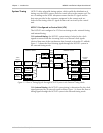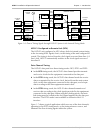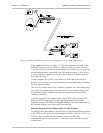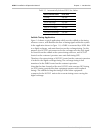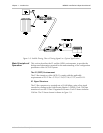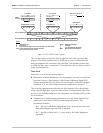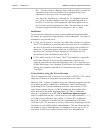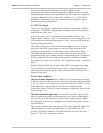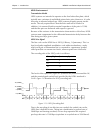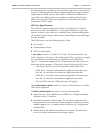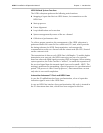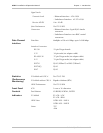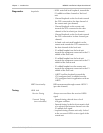
HCD-E1 Installation & Operation Manual Chapter 1 - Introduction
01/01/01 08:07 Functional Description 1-19
At the receiving end, the checksum is calculated again on each
submultiframe and then compared against the original checksum (sent by
the transmitting end in the next submultiframe). The results are reported by
two bits multiplexed in bit 1 of time slot 0 in frames 13, 15 of the CRC-4
multiframe, respectively. Errors are counted and used to prepare statistic
data on transmission performance.
E1 (CEPT) Line Signal
The basic E1 line signal is coded using the High-Density Bipolar 3 (HDB3)
coding rules. The HDB3 coding format is an improvement of the Alternate
Mark Inversion (AMI) code.
In the AMI format, “ones” are alternately transmitted as positive and
negative pulses, whereas “zeros” are transmitted as a zero voltage level. The
AMI format cannot transmit long strings of “zeros”, because such strings do
not carry timing information.
The HDB3 coding rules restrict the maximum length of a “zero” string to
three pulse intervals. Longer strings are encoded at the transmit end to
introduce non-zero pulses. To allow the receiving end to detect these
artificially-introduced pulses and to enable their removal to restore the
original data string, the encoding introduces intentional bipolar violations in
the data sequence. The receiving end detects these violations and when
they appear to be part of an encoded “zero” suppression string - it removes
them.
Bipolar violations which are not part of the HDB3 zero-suppression string
are assumed to be caused by line errors, and are counted separately, to
obtain information on the quality of the transmission link when the CRC-4
function is not used.
E1 Line Alarm Conditions
The loss of frame alignment (also called loss of synchronization) condition
is declared when too many errors are detected in the frame alignment signal
(FAS), e.g., when 3 or 4 FAS errors are detected in the last 5 frames. Loss of
frame alignment is cleared after no FAS errors are detected in two
consecutive frames. The loss of frame alignment is reported by means of the
A bit (see Figure 1-5).
The alarm indication signal (AIS) is an unframed “all-ones” signal, and is
used to maintain line signal synchronization in case of loss of input signal,
e.g., because an alarm condition occurred in the equipment that supplies
the line signal. Note that the equipment receiving an AIS signal loses frame
synchronization.
The excessive bit error rate is measured on the frame alignment signal. The
alarm threshold is an error rate higher than 10
-3
that persists for 4 to 5
seconds. The alarm condition is canceled when the error rate decreases
below 10
-4
for 4 to 5 consecutive seconds.




